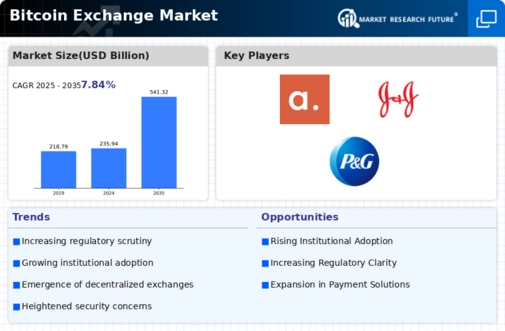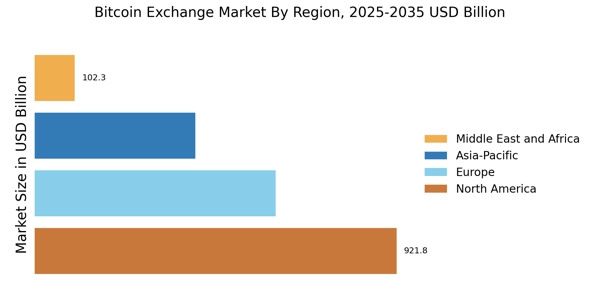Regulatory Clarity
The Bitcoin Exchange Market is currently navigating a landscape of evolving regulatory frameworks, which may provide much-needed clarity for market participants. Governments and regulatory bodies are increasingly recognizing the importance of establishing guidelines for cryptocurrency exchanges. Recent developments indicate that several jurisdictions are working towards implementing comprehensive regulations that address issues such as anti-money laundering and consumer protection. This regulatory clarity could foster greater confidence among investors and institutions, potentially leading to increased participation in the Bitcoin Exchange Market. Furthermore, as exchanges comply with regulatory requirements, they may enhance their operational integrity and attract a broader range of users. While the regulatory environment remains complex, the trend towards clearer guidelines suggests a maturation of the Bitcoin Exchange Market, which could ultimately benefit all stakeholders involved.
Technological Advancements
The Bitcoin Exchange Market is significantly influenced by ongoing technological advancements that enhance trading efficiency and security. Innovations such as blockchain technology, smart contracts, and decentralized finance (DeFi) platforms are reshaping how transactions are conducted within the market. Recent data indicates that the implementation of advanced security protocols has reduced the incidence of hacking incidents on exchanges by approximately 40% over the past year. Additionally, the rise of automated trading systems and algorithmic trading strategies is likely to increase market liquidity and reduce spreads. As technology continues to evolve, it may enable exchanges to offer more sophisticated trading features, such as margin trading and derivatives, thereby attracting a wider array of investors. The integration of cutting-edge technology into the Bitcoin Exchange Market could lead to a more dynamic and competitive trading environment.
Increased Retail Participation
The Bitcoin Exchange Market is witnessing a surge in retail participation, driven by the growing accessibility of cryptocurrency trading platforms. As more individuals become familiar with digital currencies, the number of retail investors has expanded significantly. Recent data indicates that retail trading volumes have increased by approximately 30% in the past year, reflecting a shift in market dynamics. This influx of retail investors is likely to enhance liquidity and volatility within the Bitcoin Exchange Market, as these participants often engage in frequent trading. Furthermore, the proliferation of user-friendly mobile applications and educational resources has empowered novice traders to enter the market, potentially leading to a more diverse investor base. As retail participation continues to rise, it may influence price movements and trading strategies, thereby shaping the overall landscape of the Bitcoin Exchange Market.
Institutional Investment Growth
The Bitcoin Exchange Market is experiencing a notable increase in institutional investment, which appears to be reshaping the market's structure. Institutional players, including hedge funds, family offices, and publicly traded companies, have begun to allocate a portion of their portfolios to Bitcoin. Recent statistics suggest that institutional investments in Bitcoin have surged by over 50% in the last year, indicating a growing acceptance of cryptocurrency as a legitimate asset class. This influx of capital from institutional investors is likely to enhance market stability and credibility, as these entities typically engage in longer-term investment strategies. Moreover, the presence of institutional players may lead to the development of more sophisticated financial products, such as Bitcoin ETFs, further legitimizing the Bitcoin Exchange Market. As institutional interest continues to grow, it could significantly impact market dynamics and investor sentiment.
Market Sentiment and Media Influence
The Bitcoin Exchange Market is profoundly affected by market sentiment, which is often shaped by media coverage and public perception. Positive news stories, endorsements from influential figures, and social media trends can lead to rapid price fluctuations and increased trading volumes. Recent analysis suggests that Bitcoin's price movements are closely correlated with media sentiment, with spikes in positive coverage often preceding significant price rallies. Conversely, negative news can trigger sell-offs and heightened volatility. As the Bitcoin Exchange Market matures, the influence of media and public sentiment is likely to remain a critical factor in shaping market dynamics. Investors and traders must remain vigilant, as shifts in sentiment can lead to abrupt changes in market conditions, impacting their strategies and decisions.


















Leave a Comment